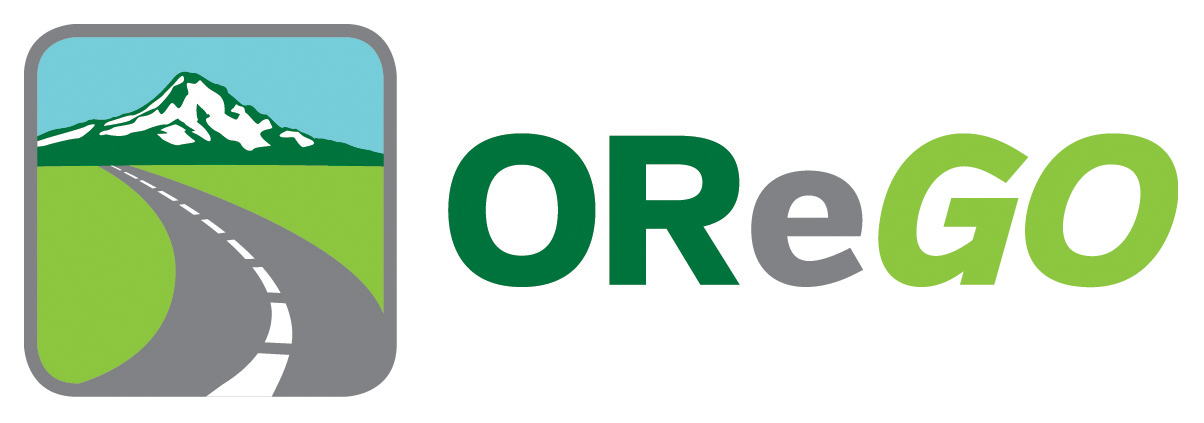ODOT launches OReGO to educate drivers about Oregon’s Road Usage Charge Program
Oregon Department of Transportation sent this bulletin at 02/18/2015 02:39 PM PSTHaving trouble viewing this email? View it as a Web page.
February 18, 2015 15-016
For more information: Michelle Godfrey, (503) 986-3903 or (971) 304-9705
ODOT launches OReGO to educate drivers about Oregon’s Road Usage Charge Program
The nation’s first per-mile charging system will launch in Oregon July 1, 2015

SALEM — Freedom. Adventure. Responsibility. Oregonians expressed these values most often when asked to describe what Oregon’s Road Usage Charge Program should represent. By popular preference, the road usage charge program is now named “OReGO” and will be signified by the logo above (file attached below).
ODOT this week launched myOReGO.org, the program’s official website, where anyone interested in the road usage charge program can sign up for the interest list and indicate an intent to volunteer; or, they can learn how the program will work and how it came to be law in Oregon.
Last fall, ODOT conducted a statewide listening tour to understand Oregonians’ views and preferences about how the road usage charge program should be communicated and conducted. Presented with 12 options, the OReGO name and logo shown was chosen by 80 percent of participants. Comments included: “It says ‘Go with Oregon’ or ‘Oregon here we go’;” “It is a fun name…I visualize a dog with its head out the window…and going out and exploring Oregon…it has that kind of fun, forward thinking;” “Gives me an idea what the program is for;” “Over time …everybody would know exactly what this is.”
“The Road Usage Charge Program must be acceptable to Oregonians and ODOT must prepare this program with their attitudes and sensitivities in mind,” said Jim Whitty, Manager of ODOT’s Office of Innovative Partnerships and Alternative Funding. “This program’s design and operations should make road usage charging simple and easy for every citizen who participates,” he said.
ODOT will use the name and logo in its efforts to educate Oregonians about the program and get volunteers to join the program. The law allows for up to 5,000 volunteers, and one great first step in deciding to join the program is to learn more about it at www.myOReGO.org.
“This program is about fairness, and Oregon is on the cutting edge of this conversation,” said Tammy Denee, a 2013 road usage charge pilot program participant. “Many of the western states are following our lead to develop mileage-based options, too. As new forms of transportation become more common, like all-electric cars, we must make sure Oregon’s funding system is equitable and everyone is paying their fair share to maintain, preserve and improve our state’s roads and bridges,” she said. Read Tammy’s story at myOReGO.org.
What is the Road Usage Charge Program?
Oregon’s Senate Bill 810 (2013) was the first legislation in the U.S. to establish a road usage charge system for state transportation funding. It authorized ODOT to set up a mileage collection system for volunteer motorists beginning July 1, 2015. ODOT will assess a charge of 1.5 cents per mile for up to 5,000 cars and light-duty commercial vehicles and issue a fuels tax credit to those participants. The volunteer program is the start of an alternate method of paying for Oregon's roads.
By law, the Road Usage Charge Program must give motorists choices for the technologies they use to report miles driven as well as how they manage and pay their road use charges. They will have the opportunity to obtain services through private sector account managers with market-driven options that are efficient and cost-effective.
How Will the System Work?
First, volunteers will choose options for participating in the program, including who will manage their mileage reporting and payment/credit. ODOT has contracted with Azuga, Sanef and Verizon to manage accounts, calculate charges plus any credits due, and submit charges to the Oregon Treasury. ODOT will audit account managers and verify that all charges owed are paid.
The road usage charge system will automatically collect mileage data from vehicles. A mileage reporting device selected by the motorist will interface with the vehicle and be paired with software to send mileage totals to the chosen account manager. The on-board mileage reporting device may be either “basic” (does not use location-determination technology) or “advanced” (uses location-determination technology).
Why is Oregon implementing the Road Usage Charge Program?
Funding for transportation system maintenance, improvements and construction has been declining in Oregon and around the country since the 1990s. This is due in part to more fuel efficient vehicles purchasing less fuel, thus paying less in fuel taxes—which go toward maintaining and building roads and highways. That’s good news for the environment and for reducing dependence on fossil fuels, but it reduces funds available to maintain Oregon roads. More information about declining revenues and transportation funding is available on the ODOT website: http://www.oregon.gov/ODOT/Pages/Transportation_Funding.aspx.
The per-mile charge is not a new concept in Oregon; the legislature first authorized investigation into options to the traditional fuels tax in 2001. Fourteen years and two pilot programs later, with extensive research and study, Oregon’s Road Usage Charge Program is becoming operational.
Learn about OReGO (Oregon’s Road Usage Charge Program), sign up for the interest list, indicate interest in volunteering and find out how Oregon pioneered the program at myOReGO.org.
##ODOT##
